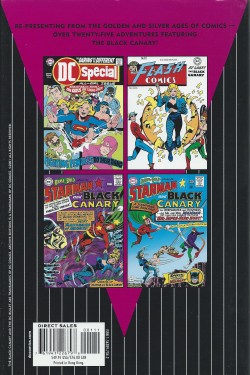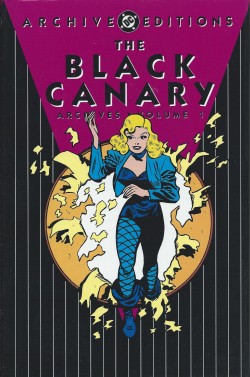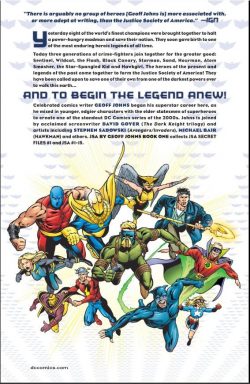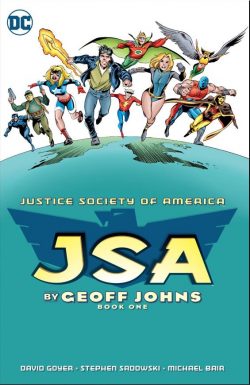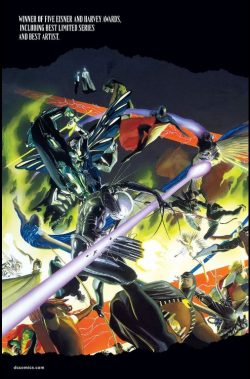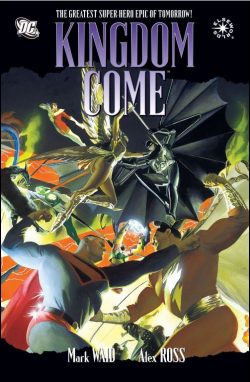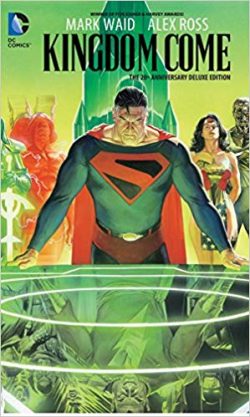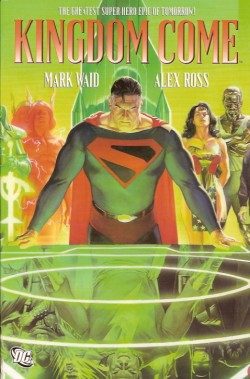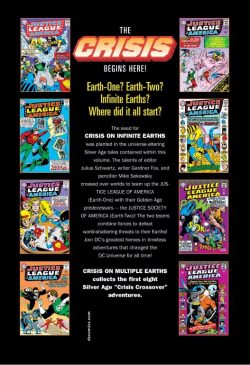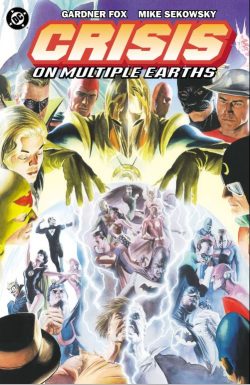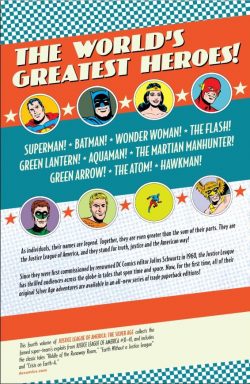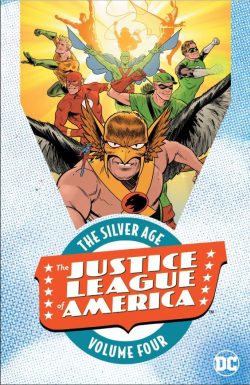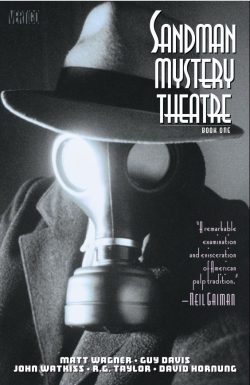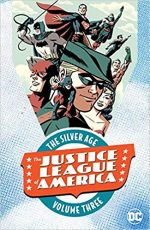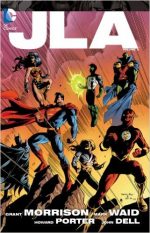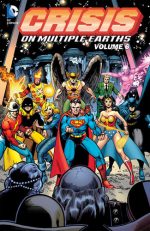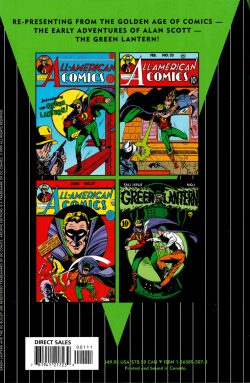
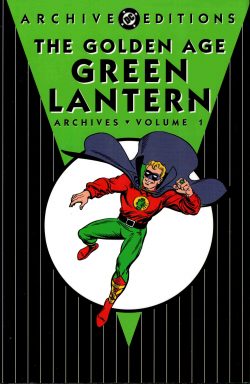
By Bill Finger, Martin Nodell, E.E. Hibbard, Irwin Hasen & various (DC Comics)
ISBN: 978-1-56389-507-4
Thanks to comics genius and editorial wunderkind Sheldon Mayer, the innovative fledgling company All-American Comics – who co-published in association with and would eventually be absorbed by DC – published the first comic book super-speedster in Flash Comics. They followed up a few months later with another evergreen and immortal all-star.
The Green Lantern debuted in issue #16 of the company’s flagship title just as superheroes began to truly dominate the market, supplanting newspaper strip reprints and stock genre characters in the still primarily anthologised comic books. The Emerald Gladiator would be swiftly joined in All-American Comics by The Atom, Red Tornado, Sargon the Sorcerer and Doctor Mid-Nite until eventually only gag strips such Mutt and Jeff and exceptional topical tough-guy military strips Hop Harrigan (Ace of the Airwaves) and Red, White and Blue remained to represent mere mortal heroes.
At least, until tastes shifted again after the war and costumed crusaders faded away, to be replaced by cowboys, cops and private eyes…
Devised by up-and-coming cartoonist Martin Nodell (and fleshed out by Bill Finger in the same generally unsung way he had contributed to the success of Batman), Green Lantern soon became AA‘s second smash sensation.
The arcane avenger gained his own solo-starring title little more than a year after his premiere and appeared in other anthologies such as Comics Cavalcade and All Star Comics for just over a decade before, like most first-generation superheroes, he faded away in the early1950s. However, he first suffered the uniquely humiliating fate of being edged out of his own strip and comic book by his pet, Streak the Wonder Dog…
However, that’s the stuff of other reviews. This spectacular quirkily beguiling deluxe Archive edition (collecting the Sentinel of Justice’s appearances from All-American Comics #16-30 – covering July 1940 to September 1941 as well as Green Lantern #1 (Fall 1941)) opens with a rousing reminiscence from Nodell in a Foreword which discusses the origins of the character before the parade of raw, graphic enchantment starts with the incredible history of The Green Flame of Life…
Ambitious young engineer Alan Scott only survives the sabotage and destruction of a passenger-packed train due to the intervention of a battered old railway lantern. Bathed in its eerie emerald light he is regaled by a mysterious green voice with the legend of how a meteor once fell in ancient China and spoke to the people, predicting Death, Life and Power.
The star-stone’s viridian glow brought doom to the savant who reshaped it into a lamp, sanity to a madman centuries later and now promised incredible might to bring justice to the innocent…
Instructing Scott to fashion a ring from its metal and draw a charge of power from the lantern every 24 hours, the ancient artefact urges the engineer to use his formidable willpower to end all evil: a mission Scott eagerly takes up by promptly crushing corrupt industrialist Dekker – who had callously caused wholesale death just to secure a lucrative rail contract.
The ring made Scott immune to all minerals and metals, enabled him to fly and pass through walls, but as he battled Dekker’s thugs the grim avenger painfully discovers that living – perhaps organic – materials such as wood or rubber can penetrate his jade defences and cause him mortal harm…
The saboteurs duly punished, Scott resolves to carry on the fight and devises a “bizarre costume†to disguise his identity and strike fear and awe into wrongdoers…
Most of the stories at this time were untitled, and All-American Comics #17 (August 1940) found Scott in Metropolis (long before it became the fictional home of Superman) where his new employer is squeezed out of a building contract by a crooked City Commissioner in bed with racketeers. With lives at risk from shoddy construction, the Green Lantern moves to stop the gangsters. He nearly loses his life to overconfidence before finally triumphing, after which #18 finds Scott visiting the 1940 New York World’s Fair.
This yarn (which I suspect was devised for DC’s legendary comicbook premium New York World’s Fair Comics, but shelved at the last moment) introduces feisty romantic interest Irene Miller as she attempts to shoot the gangster who framed her brother. Naturally, gallant he-man Scott had to get involved, promptly discovering untouchable gang-boss Murdock owns his own Judge, by the simple expedient of holding the lawman’s daughter captive…
However, once Alan applies his keen wits and ruthless mystic might to the problem Murdock’s power – and life – are forfeit, after which, in All-American Comics #19, Scott saves a man from an attempted hit-and-run and finds himself ferreting out a deadly ring of insurance scammers collecting big pay-outs through inflicting “accidents†upon unsuspecting citizens.
Issue #20 opened with a quick recap of GL’s origin before instituting a major change in the young engineer’s life. Following the gunning down of a roving radio announcer and assassination of the reporter’s wife, our hero investigates APEX Broadcasting System in Capitol City… and again meets Irene Miller.
She works at APEX, and with Alan’s help uncovers a scheme whereby broadcasts are used to transmit coded instructions to merciless smugglers. Once the Ring-wielder mops up the cunning gang and their inside man, engineer Scott takes a job at the company and begins a hapless romantic pursuit of capable, valiant Irene.
Thanks to scripter Finger, Green Lantern was initially a grim, mysterious and spookily implacable figure of vengeance weeding out criminals and gangsters but, just as with early Batman sagas, there was always a strong undercurrent of social issues, ballsy sentimentality and human drama.
All-American #21 has the hero expose a cruel con wherein a crooked lawyer presses young criminal Cub Brenner into posing as the long-lost son of a wealthy couple to steal their fortune. Of course, the kid has a change of heart and everything ends happily, but not before stupendous skulduggery and atrocious violence ensue…
In #22, when prize-fighter Kid McKay refuses to throw a bout, mobsters abduct his wife and even temporarily overcome the fighting-mad Emerald Guardian. Moreover, when one brutal thug puts on the magic ring, he swiftly suffers a ghastly punishment which allows GL to emerge victorious…
Slick veteran Everett E. Hibbard provided the art for #23, and his famed light touch frames GL’s development into a less fearsome and more public hero. As Irene continues to rebuff Alan’s advances – in vain hopes of landing his magnificent mystery man alter ego – the engineer accompanies her to interview movie star Delia Day and stumbles into a cruel blackmail racket.
Despite their best efforts the net result is heartbreak, tragedy and many deaths. Issue #24 then sees the Man of Light going undercover to expose philanthropist tycoon R.J. Karns, who maintains his vast fortune by selling unemployed Americans into slavery on a tropical Devil’s Island, whilst #25 finds Irene uncovering sabotage at a steel mill.
With GL’s unsuspected help she then exposes purported enemy mastermind The Leader as no more than an unscrupulous American insider trader trying to force prices down for a simple Capitalist coup…
Celebrated strip cartoonist Irwin Hasen began his long association with Green Lantern in #26 when the hero aids swindled citizens whose lending agreements with a loan shark were being imperceptibly altered by a forger to keep them paying in perpetuity, after which the artist illustrated the debut appearance of overnight sensation Doiby Dickles in All-American #27 (June 1941).
The rotund, middle-aged Brooklyn-born cab driver was simply intended as light foil and occasional sidekick for the poker-faced Emerald Avenger but rapidly grew to be one of the most popular and beloved comedy stooges of the era; soon sharing covers and even by-lines with the star.
In this initial dramatic outing, he bravely defends fare Irene (sorry: irresistible – awful, but irresistible) from assailants as she carries plans for a new radio receiver device. For his noble efforts, Doiby is sought out and thanked by Green Lantern. After the verdant crusader investigates further, he discovers enemy agents at the root of the problem, but when Irene is again targeted, the Emerald Avenger was seemingly killed…
This time, to save Miss Miller, Doiby disguises himself as “de Lantrin†and confronts the killers alone before the real deal turns up to end things. As a reward, the Brooklyn bravo is offered an unofficial partnership…
In #28 the convenient death of millionaire Cyrus Brand and a suspicious bequest to a wastrel nephew lead Irene, Doiby and Alan to a sinister gangster dubbed The Spider who manufactures deaths by natural causes, after which #29 finds GL and the corpulent cabbie hunting mobster Mitch Hogan, who forces pharmacies to buy his counterfeit drugs and products. The brute utilises strong-arm tactics to ensure even the courts carry out his wishes – at least until the Lantern and his wrench-wielding buddy give him a dose of his own medicine…
The last All-American yarn here is from issue #30 (cover-dated September 1941) and again sees Irene sticking her nose into other peoples’ business. This time she exposes a brace of crooked bail bondsmen exploiting former criminals trying to go straight, before being again kidnapped…
This raw and vital high-energy compilation ends with the stirring contents of Green Lantern #1 from Fall 1941, scripted by Finger and exclusively illustrated by Nodell, who had by this time dropped his potentially face-saving pseudonym Mart “Dellonâ€.
The magic began with a 2-page origin recap in ‘Green Lantern – His Personal History’, after which ‘The Masquerading Mare!’ sees GL and Doiby smash the schemes of racketeer Scar Jorgis who goes to quite extraordinary lengths to obtain a racehorse inherited by Irene.
Following an article by Dr. William Moulton Marston (an eminent psychologist familiar to us today as the creator of Wonder Woman) in which he discusses the topic of ‘Will Power’, the comic thrills resume when a city official is accused of mishandling funds allocated to buy pneumonia serum in ‘Disease!!’
Although Green Lantern and Doiby spearhead a campaign to raise money to prevent an epidemic, events take a dark turn when the untouchable, unimpeachable Boss Filch experiences personal tragedy and exposes his grafting silent partners high in the city’s governing hierarchy…
Blistering spectacle is the star of ‘Arson in the Slums’, as Alan and Irene are entangled in a crusading publisher’s strident campaign to renovate a ghetto. Of course, the philanthropic Barton and his real estate pal Murker have only altruistic reasons for their drive to re-house the city’s poorest citizens. Sure, they do…
Doiby is absent from that high octane thriller but guest-stars with the Emerald Ace in prose tale ‘Hop Harrigan in “Trailers of Treachery‒ – by an unknown scripter and probably illustrated by Sheldon Mayer – a ripping yarn starring AA’s aviation ace (and star of his own radio show) after which ‘Green Lantern’ and Doiby travel South of the Border to scenic Landavo to investigate tampering with APEX’s short-wave station and end up in a civil war.
They soon discover the entire affair has been fomented by foreign agents intent on destroying democracy on the continent…
With the threat of involvement in the “European War†a constant subject of American headlines, this sort of spy story was gradually superseding general gangster yarns, and as Green Lantern displayed his full bombastic might against tanks, fighter planes and invading armies, nobody realised that within mere months America and the entire comic book industry were to be refitted and reconfigured beyond all recognition. Soon mystery men would become patriotic morale boosters parading and sermonising ad infinitum in every corner of the industry’s output as the real world brutally intruded on the hearts and minds of the nation…
Including a breathtaking selection of stunning and powerfully evocative covers by Sheldon Moldoff, Hasen & Howard Purcell, this magnificent book is a sheer delight for lovers of the early Fights ‘n’ Tights genre: gripping, imaginative and exuberantly exciting – but yet again remains unavailable in digital formats. One day, though…
© 1940, 1941, 1999 DC Comics. All Rights Reserved.

